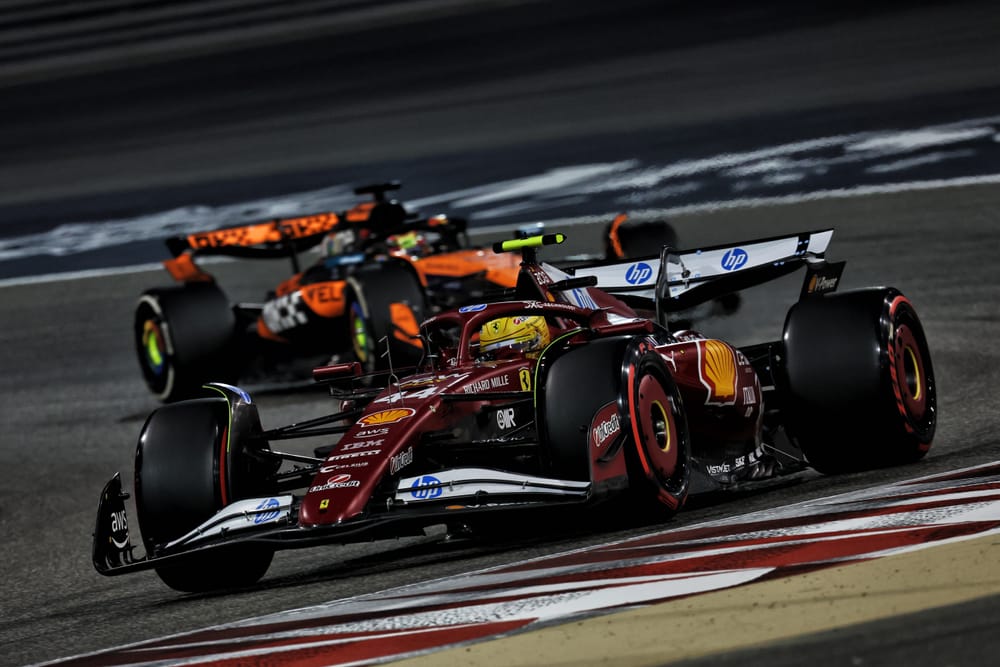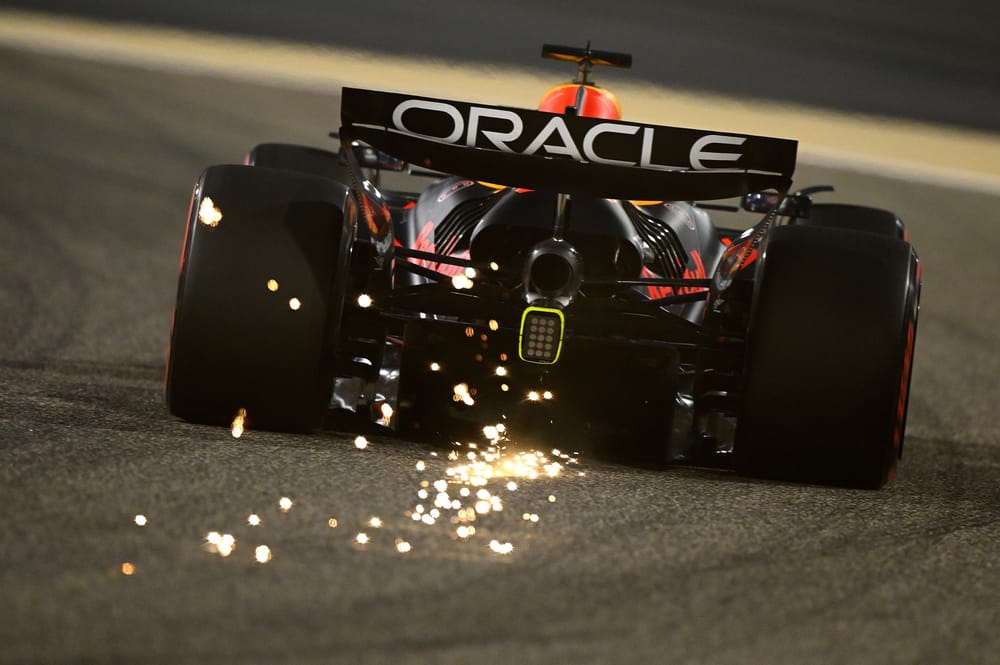Formula 1's return to Bahrain six weeks after pre-season testing presents a rare opportunity to compare cars of today and a month-and-a-half ago from trackside.
With teams running similar programmes in Friday practice, it meant a far narrower distribution than witnessed in the scattergun of testing. Even with only two hours to watch them in action, it’s at least easier to know you are comparing like with like thanks to the predictability of FP2 programmes in particular.
Conditions are the confounding factor. With the air temperature in the mid-30C bracket for the sunny FP1 session, dipping down to 29C by the end of FP2 in the evening session, the track is a very different prospect to the chillier surface of pre-season. That’s made emphatically clear in FP1, as is the green-ness of the track, s most drivers have some kind of early moment – big or small – up at the tight Turn 10 left-hander leading onto the back straight.
The downside of just two hours of running is that you must choose your spots, so to get an idea of performance in the quicker corners I opted for the long Turn 11 left-hander for FP2. The duration of the turn means it’s difficult to hide the vices of cars here, although the heavily-contained pace in the long runs meant a limited opportunity to see the cars at the limit.
Perhaps the most powerful impression is just how narrow a band these cars are operating in. In testing, the differences were more pronounced, today more subtle – to be expected given how tight the field spread will be in qualifying.
McLaren
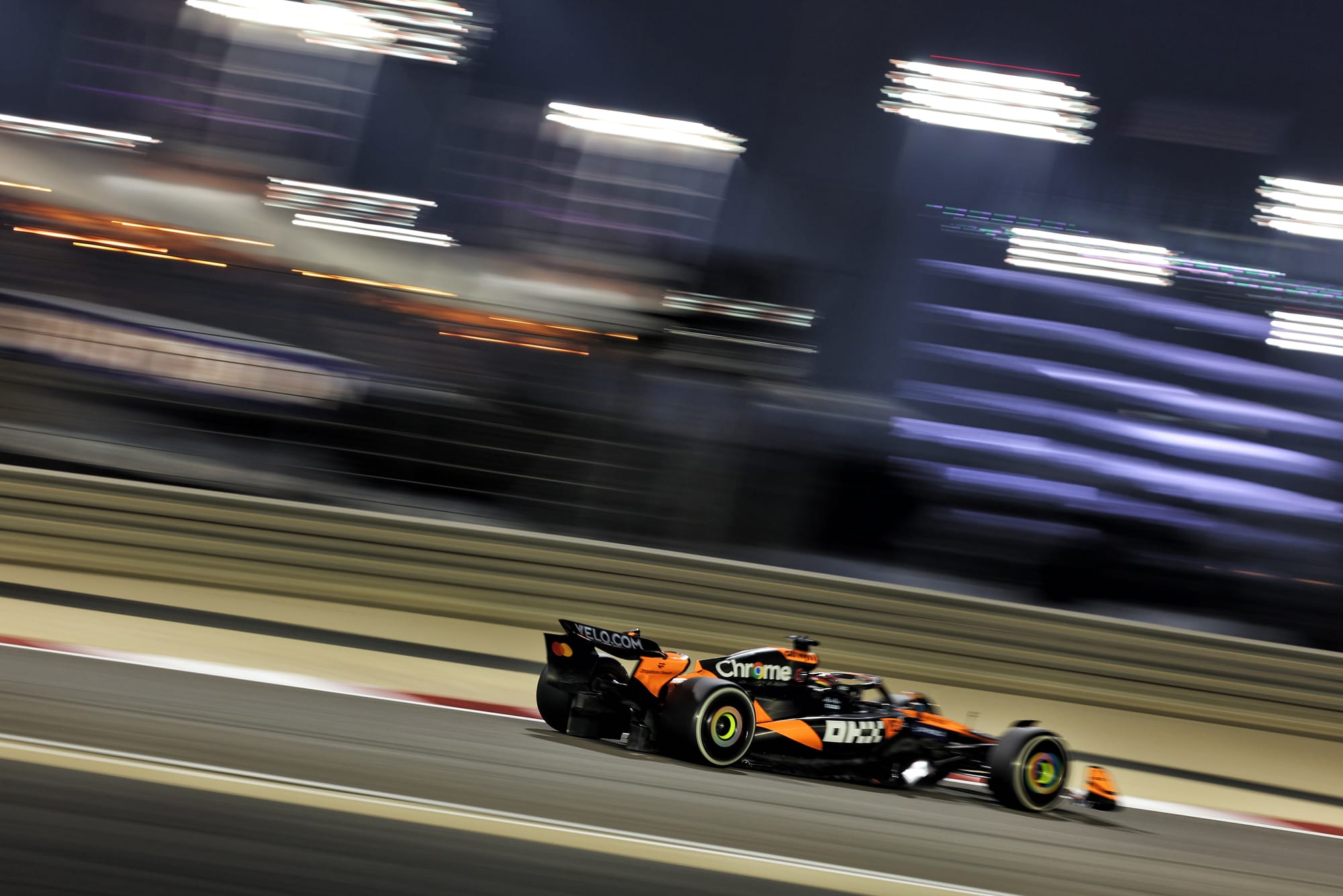
The McLaren MCL39 looked very familiar on track. Just as in the test, the front-end strength was obvious and it remains a responsive car on turn-in and one that rotates well.
The rear instability that was in evidence in testing is trickier to judge, simply because of the lack of opportunity to watch in the high-speed esses, but the car looked the pick of the bunch throughout the session.
This is no particular surprise, but it confirms the impressions from pre-season, even though the car rarely looked utterly planted and obviously demands the full attention of its drivers.
Ferrari
Ever since the start of testing, the Ferrari has struggled to produce a consistent balance and while it isn't anywhere near as extreme, it continued to appear a little capricious today.
While Lewis Hamilton recovered from an early mistake at Turn 10 when the green track caught him out, the Ferrari in the hands of both drivers clearly didn’t give quite the same confidence as the McLaren.
At Turn 11, it takes just that fraction longer for the car to settle into the corner after turning in, although once into the corner it works well enough.
Rookie Dino Beganovic also caught the eye in FP1, not so much for his speed but his intelligent approach to working through the session, experimenting with moving around the unavoidable instability at entry to Turn 10 and showing he's learning as the session progresses.
Red Bull
It wasn’t until FP2 that the ‘real’ RB21 could be seen simply because of Max Verstappen’s absence from FP1 to allow Ayumu Iwasa some mileage.
When he did hit the track, in Turn 11 there was a hint of the balance disconnect he has talked of, but it is far less pronounced than it was at times in testing. If anything, at Turn 11 Verstappen just appeared a fraction less committed than the McLarens despite the car responding relatively well.
Yuki Tsunoda is also fascinating to watch in FP1 in particular as he experimented with getting the best out of the pointy initial turn-in. He could move the instability around, one minute early in the turn-in phase, the next in the middle of it, and on one occasion suffered from over-rotation that cost him significant moment.
But all signs are he’s still continuing to experiment and learn in a car that he might be at times puzzled by, but that isn’t sapping all his confidence.
Mercedes
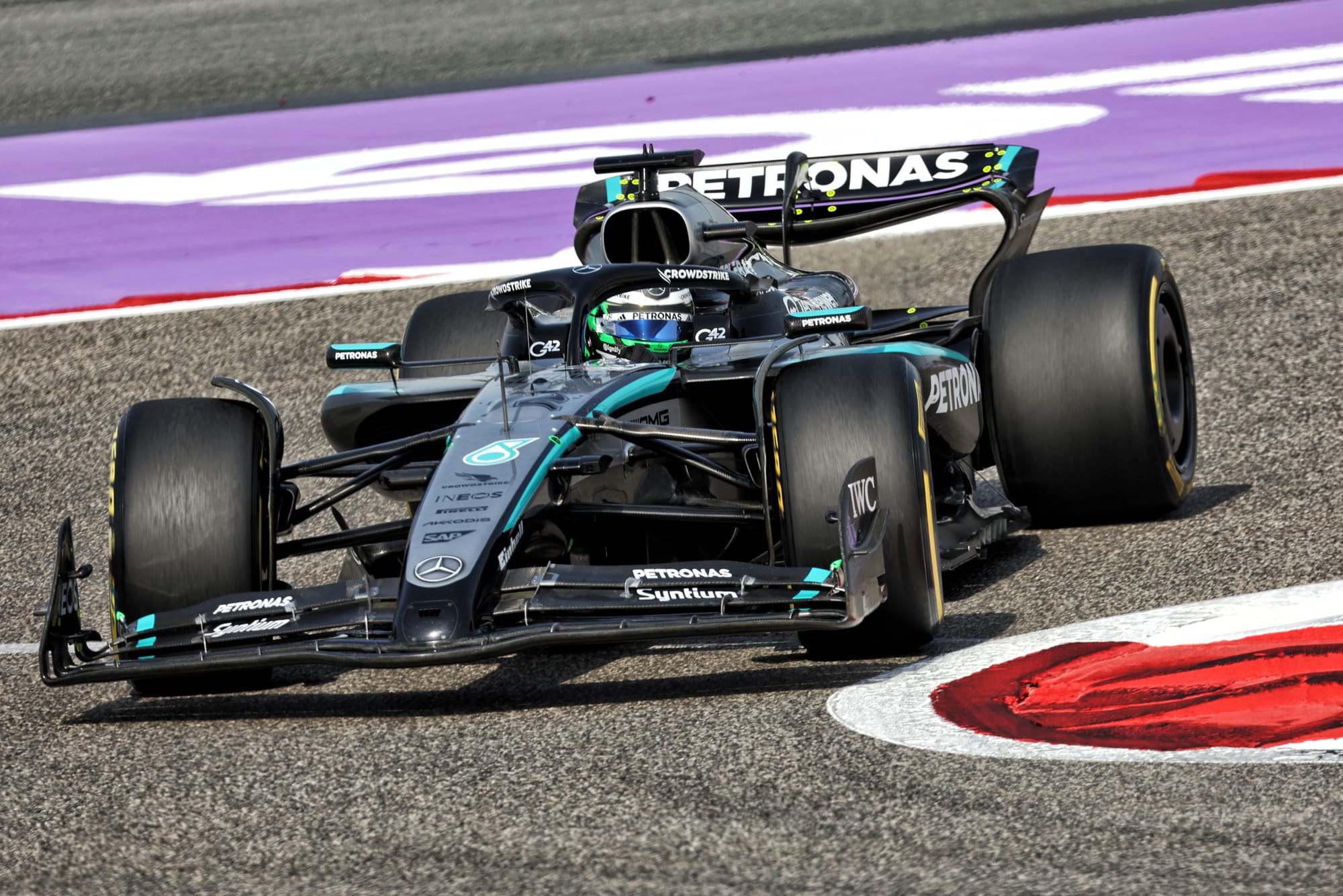
The Mercedes looks a handful at Turn 10 in FP1, with rookie Frederik Vesti struggling particularly badly under braking and making several visits to the runoff.
But as the session progressed, he settled in well. In FP2, with George Russell at the wheel, the car turns in well enough at Turn 11 but didn’t appear quite as planted mid-corner as the McLaren or even the Ferrari – although this might be a consequence of Russell not nailing it on one of his few quick laps through there.
Aston Martin
With Fernando Alonso absent from the first practice session and not having a full programme in the second, Lance Stroll is the main subject for judgment.
While in testing the Aston at times looked relatively responsive, today laid bare its limitations with the car proving a little ponderous on entry in Turn 10 and perhaps a little front-limited at Turn 11 – although that could be driver conservatism to contain an unstable rear.
Again, this is about small margins and it might have been very different had Alonso, a driver who tends to try and provoke a car, had a complete session - although in the running he did have his car exhibited similar tendencies to Stroll's.
Alpine
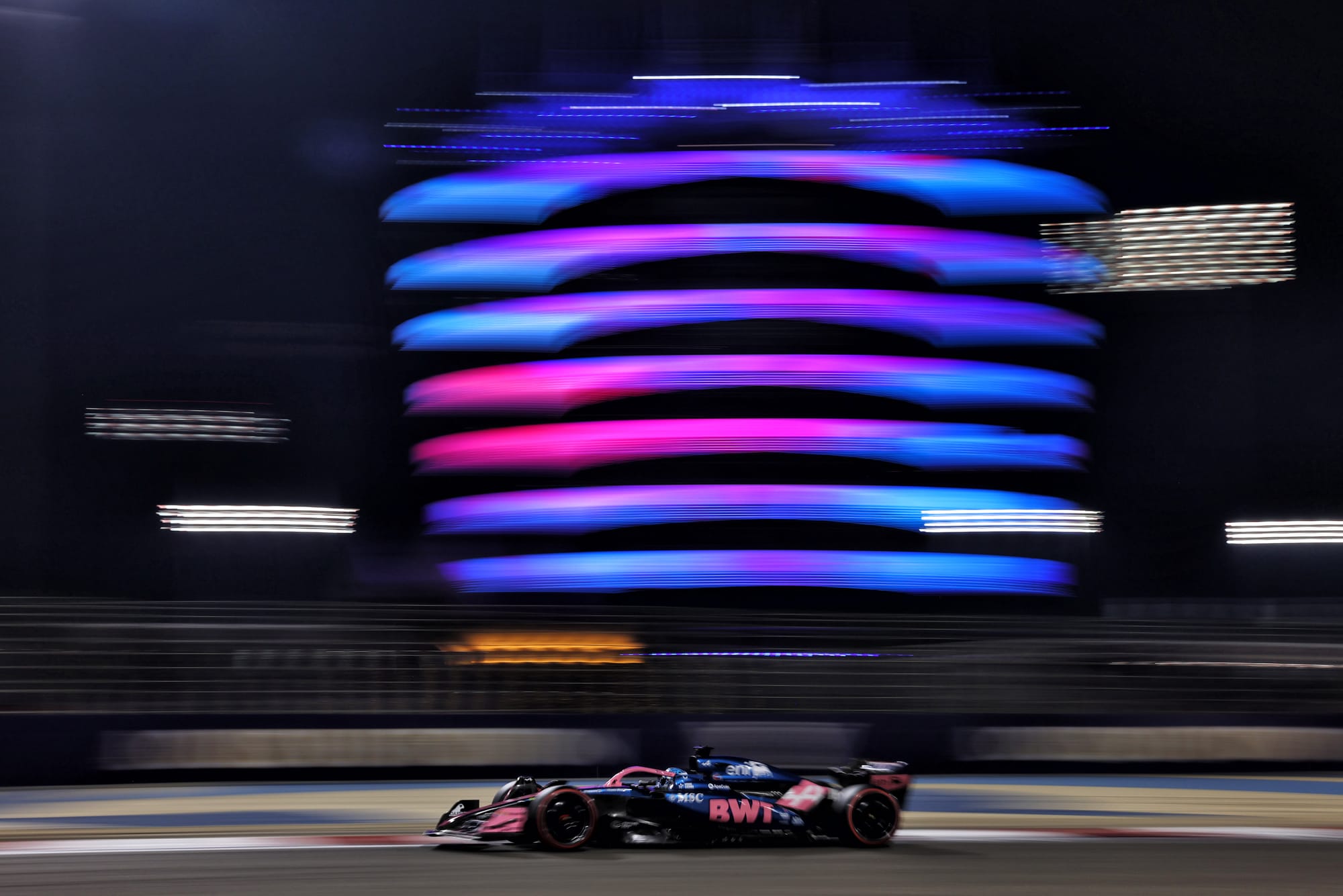
The Alpine seems to suffer more than many of its rivals from the dramatic increase in track temperature.
In testing, the car looked to be vying for midfield leadership with Williams but today it's far less convincing and appears a little less consistent.
While Jack Doohan looks more comfortable than he did in testing, the result of a small but significant rear geometry change, neither Alpine driver looks quite as confident with the car as Pierre Gasly did in testing.
It's almost as if it has changed places with the VCARB, going from midfield frontrunner to deeper in the pack. The rear wing of the car also suffered from a strange vibration in Turn 11 that none of its rivals exhibited, which is seemingly not a problem but is unusual to see.
Haas
The Haas generally ran heavy in testing and even among endless hours watching trackside it was difficult to catch it ever looking particularly quick.
Today is different, the car looking much livelier, but watching at Turn 11 revealed an interesting difference in approach between the two drivers.
Ollie Bearman tended to load the car up almost instantaneously on entry, getting good rotation, while Esteban Ocon is slightly more progressive, which sometimes meant he seemed a little less well-rotated mid-corner.
This made it perhaps the most pronounced difference between team-mates during FP2.
Racing Bulls
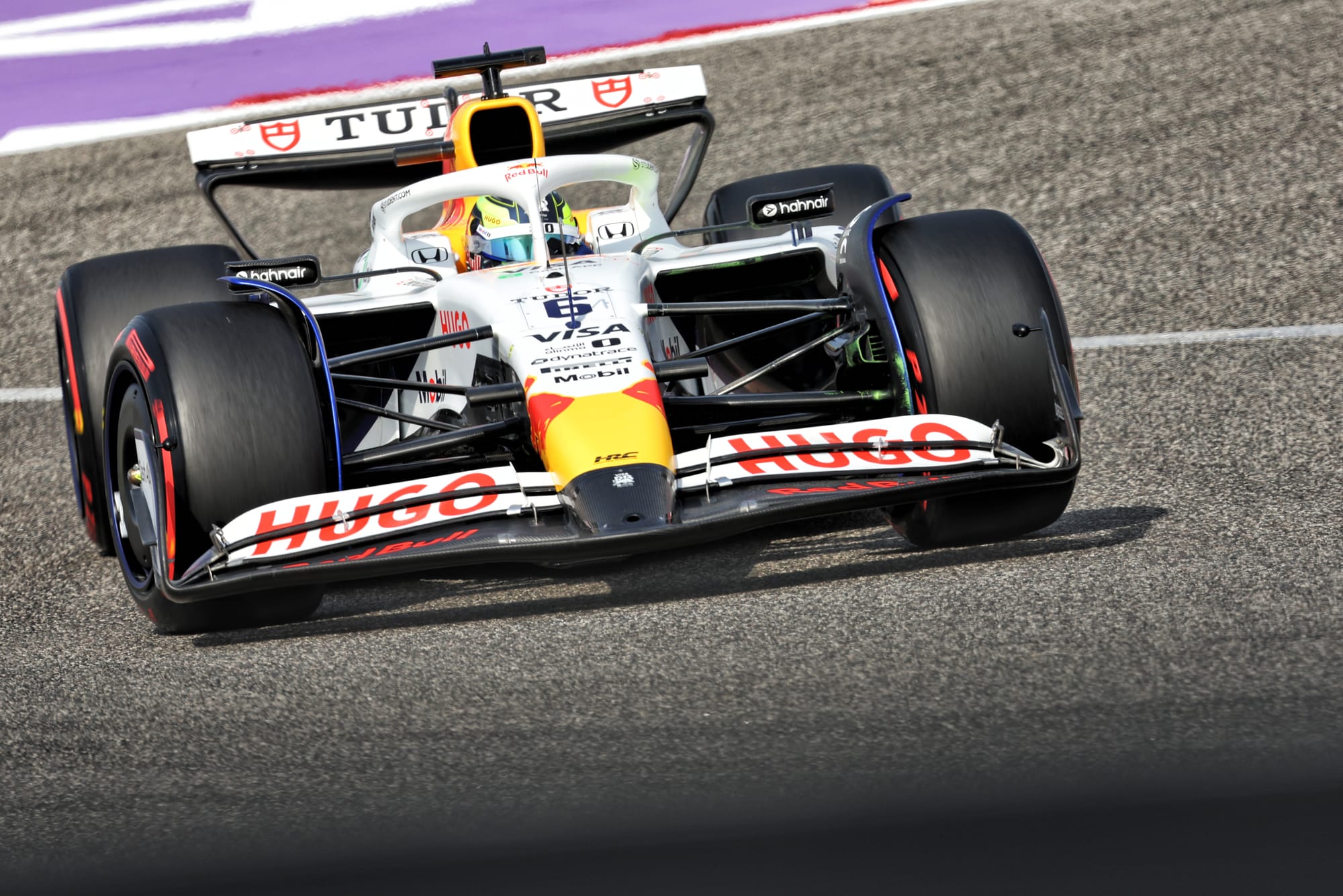
During pre-season testing, the VCARB looked like a middling midfielder, maybe two or three tenths off the front of that pack and battling understeer. Here, there is a very obvious step forward.
That doesn't mean a night-and-day difference, but it reflects a car that seems to find the right working window well.
It doesn’t turn in as well as a McLaren, but it appears to do everything pretty consistently. Isack Hadjar looks a little more comfortable at Turn 11, where Liam Lawson struggled a little more on entry, but the car is doing what it should be.
Williams
The Williams looked quick, but a little tricky at times during pre-season testing.
Here while brisk, that edge of pace isn't quite so obvious among its midfield rivals and the difficulties seemed a little more regular. Alex Albon found all sorts of ways to find Turn 10 to be a problem in FP1, while in FP2 it is Carlos Sainz who struggled at times with perhaps trying to grab a little too much extra track at turn-in.
The Williams drivers, Sainz in particular, use more of the rumble strip on entry than anyone else but it was destabilising the car a little too much.
In testing, the Williams looked quick (in a midfield sense), but a bit trickier whereas today it seems a little more troubled.
Sauber

The award for the biggest improver has to go to Sauber. During pre-season testing, it was a handful to drive and rarely seemed to give the drivers much confidence.
On Friday, while hardly great, the car is a clear step forward even if Gabriel Bortoleto and Nico Hulkenberg had a few tricky moments at Turn 10 in particular.
At the quicker Turn 11, the Sauber is just giving away a little grip and the confidence isn’t as high on turn-in for its drivers. But while in February it looked like a Class C car off the back of the pack, here it looked like one that with a good lap could be in Q2.

